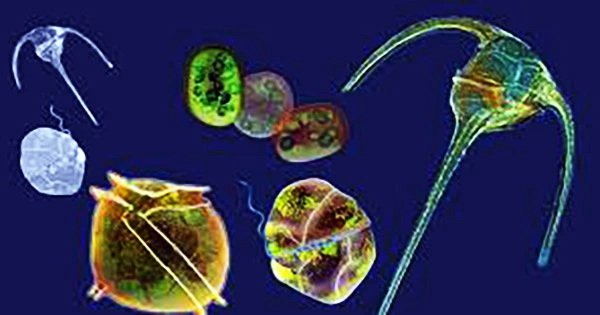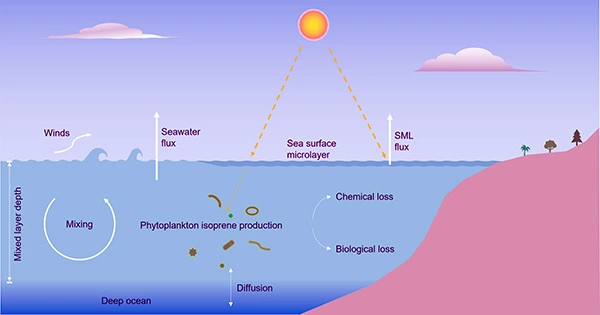A warming climate, according to new research, might shift globally abundant microbial ecosystems from carbon sinks to carbon emitters, potentially triggering climate change tipping points. The findings were reported in the journal Functional Ecology.
Mixotrophic bacteria are creatures that may alternate between photosynthesizing (absorbing carbon dioxide) and eating (releasing carbon dioxide). They are abundant throughout the world, can be found in both freshwater and marine habitats, and are thought to account for the bulk of marine plankton.
Researchers at Duke University and the University of California, Santa Barbara discovered that under warming conditions, mixotrophic microbes shift from being carbon sinks to carbon emitters by developing a computer simulation that modeled how mixotrophic microbes acquire energy in response to warming.
According to the findings, these extremely numerous microbial communities may start to have a net warming effect instead of a net cooling effect on the planet as temperatures rise.

“Our findings reveal mixotrophic microbes are much more important players in ecosystem responses to climate change than previously thought,” stated lead author Dr. Daniel Wieczynski of Duke University. Mixotrophs could increase warming by transforming microbial communities to net carbon dioxide sources in response to warming, establishing a positive feedback loop between the biosphere and the atmosphere.”
“Because mixotrophs can both capture and emit carbon dioxide, they are like switches that could either help reduce or worsen climate change,” said Dr. Holly Moeller of the University of California, Santa Barbara, and co-author of the study. These bugs are microscopic, but their effects can be massive. We need models like this to figure out how.”
“State-of-the-art predictive models of long-term climate change currently only account for microbial action in an extremely reductive, partial, or sometimes plain wrong fashion,” said Dr. Jean-Philippe Gibert of Duke University, another study co-author. Such research is thus desperately needed to better our overall understanding of the biotic influences on Earth’s atmospheric systems.”
A system of early warning: The model developed by the researchers also found that just before mixotrophic microbe communities begin producing carbon dioxide, their abundance begins to fluctuate drastically. These changes could be observed in nature by monitoring the abundance of mixotrophic microorganisms, giving optimism that these microbes could serve as early warning signs for climate change tipping points.
“These microbes may act as early indicators of the catastrophic effects of rapid climate change,” said Dr. Wieczynski, “which is especially important in ecosystems that are currently major carbon sinks like peatlands, where mixotrophs are highly abundant.”
However, the researchers discovered that increases in nutrients like nitrogen to the environment, which are often caused by runoff from agricultural and wastewater treatment plants, might muffle these early warning signs.
When the researchers included increasing levels of such nutrients in the simulations, they discovered that the temperature range over which the tell-tale variations occur begins to shrink, until finally the signal disappears and the tipping point occurs with no apparent warning.
“It will be difficult to detect these warning signs.” Especially when nutrient poisoning is becoming increasingly subtle.” Dr. Moeller stated. “However, the consequences of missing them are enormous.” We could end up with ecosystems that are far less desirable, contributing greenhouse gases to the atmosphere rather than removing them.”
The researchers tested simulations with temperatures ranging from 19 to 23 degrees Celsius in the study. Global temperatures are expected to rise 1.5 degrees Celsius over pre-industrial levels during the next five years and to exceed 2 to 4 degrees Celsius by the end of the century.
The researchers emphasize that the study’s mathematical modeling relies on little empirical evidence to evaluate the effects of warming on microbial communities. “Although models are powerful tools, theoretical results must ultimately be tested empirically,” Dr. Wieczynski stated. We strongly support the additional experimental and observational confirmation of our findings.”
















